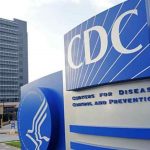CDC now says people exposed to coronavirus may NOT need to be tested, the agency says in updated guidelines

The US Centers for Disease Control and Prevention (CDC) updated its COVID-19 testing guidelines on Monday. The change, which puzzled many doctors, CDC said it’s no longer recommending testing for most people without symptoms, even if they’ve been in close contact with someone known to have the virus. The CDC did not provide any explanation for the change.
In previous guidelines, the CDC said viral testing was appropriate for people with recent or suspected exposure, even if they were asymptomatic.
Here’s what the CDC website previously said:
“Testing is recommended for all close contacts of persons with SARS-CoV-2 infection. Because of the potential for asymptomatic and pre-symptomatic transmission, it is important that contacts of individuals with SARS-CoV-2 infection be quickly identified and tested.”
The CDC changed the guidelines site on Monday. Here’s what the updated CDC guidelines now say:
“If you have been in close contact (within 6 feet) of a person with a COVID-19 infection for at least 15 minutes but do not have symptoms, you do not necessarily need a test unless you are a vulnerable individual or your health care provider or State or local public health officials recommend you take one.”
Those who don’t have Covid-19 symptoms and haven’t been in close contact with someone with a known infection do not need a test, the updated guidelines say.
“Not everyone needs to be tested,” the agency’s website says. “If you do get tested, you should self-quarantine/isolate at home pending test results and follow the advice of your health care provider or a public health professional.”
Below is an excerpt from the CDC website:
- If you have been in close contact (within 6 feet) of a person with a COVID-19 infection for at least 15 minutes but do not have symptoms:
- You do not necessarily need a test unless you are a vulnerable individual or your health care provider or State or local public health officials recommend you take one.
- A negative test does not mean you will not develop an infection from the close contact or contract an infection at a later time.
- You should monitor yourself for symptoms. If you develop symptoms, you should evaluate yourself under the considerations set forth above.
- You should strictly adhere to CDC mitigation protocols, especially if you are interacting with a vulnerable individual. You should adhere to CDC guidelines to protect vulnerable individuals with whom you live.
- You do not necessarily need a test unless you are a vulnerable individual or your health care provider or State or local public health officials recommend you take one.
- If you do not have COVID-19 symptoms and have not been in close contact with someone known to have a COVID-19 infection:
- You do not need a test.
- A negative test does not mean you will not contract an infection at a later time.
- If you decide to be tested, you should self-isolate at home until your test results are known, and then adhere to your health care provider’s advice. This does not apply to routine screening or surveillance testing at work, school, or similar situations.
- You do not need a test.
The CDC guidelines still say people should get tested if they have symptoms and that someone’s health care provider “may advise a COVID-19 test.”
“It is important to realize that you can be infected and spread the virus but feel well and have no symptoms,” the updated CDC site says, noting that local public health officials might request asymptomatic “healthy people” be tested, depending on cases and spread in an area.
In its pandemic planning scenarios, the CDC says its current best estimate is that 40% of infections are asymptomatic and 50% of transmission occurs before symptoms occur.
In the Summary of Changes section on its website, CDC said the August 24 changes apply to: “Diagnostic testing categories have been edited to focus on testing considerations and actions to be taken by individuals undergoing testing.”




